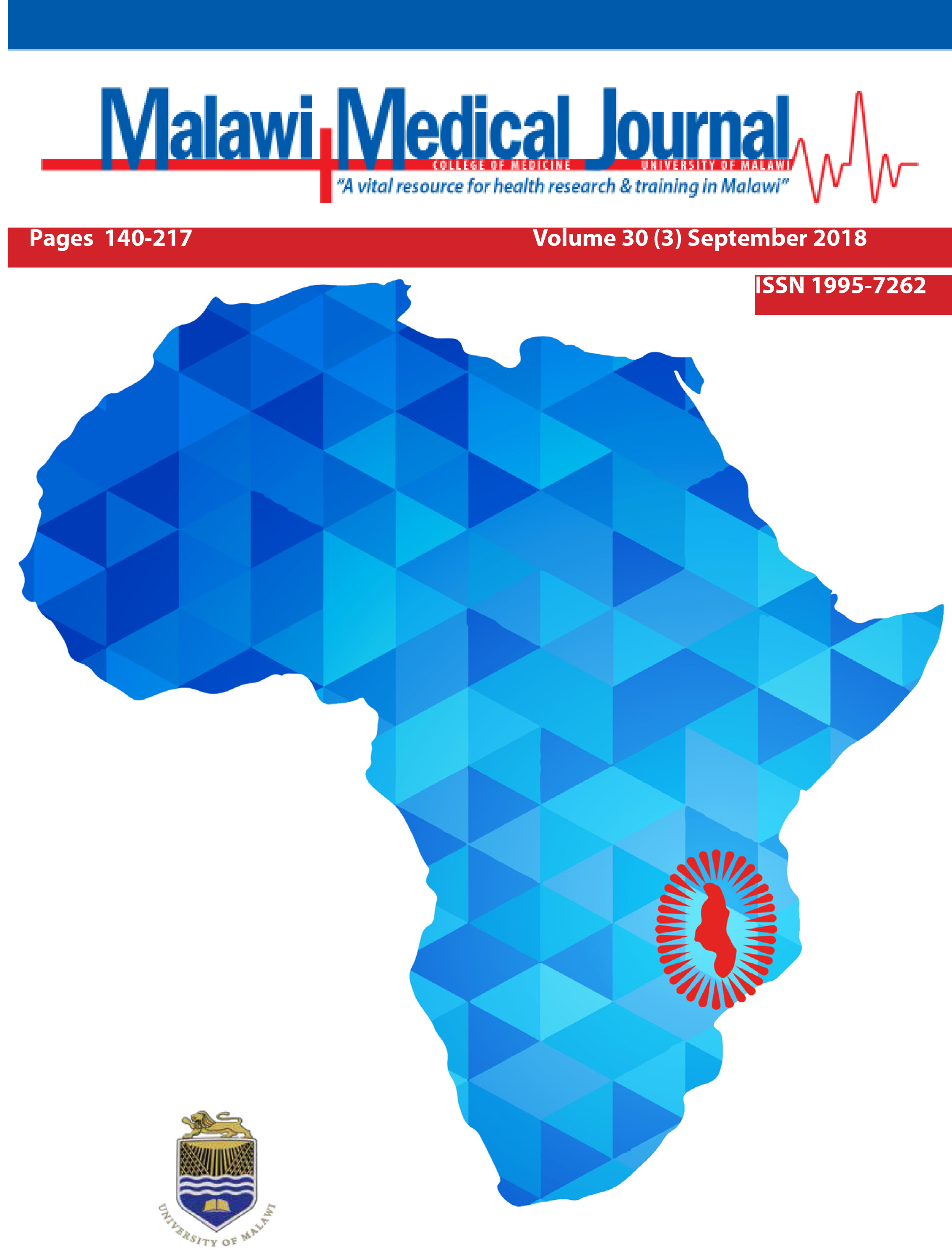Main Article Content
Factors associated with the use of seclusion in an inpatient psychiatric unit in Lilongwe, Malawi
Abstract
Background
Data on the use of seclusion for psychiatric inpatients in sub-Saharan Africa are extremely limited. Though seclusion is sometimes necessary for patients that pose a threat to themselves or others, adverse physical and psychological sequelae from the experience are increasingly being recognized, leading to efforts to reduce its use. The purpose of this study was to calculate the frequency of seclusion in patients hospitalized in an inpatient psychiatric unit in Lilongwe, Malawi, and to identify factors associated with its use.
Methods
Records of 419 psychiatric inpatients hospitalized at Kamuzu Central Hospital’s Bwaila Psychiatric Unit in Lilongwe, Malawi, from January 1, 2011 to December 31, 2011, were reviewed. Multivariate logistic regression analysis was employed to identify factors associated with the use of seclusion.
Results
Seclusion was used for 30.3% (127/419) of patients during the study period. Male patients had increased odds of being secluded (aOR: 2.22, p=0.02). Assaulting other patients on the unit (aOR 7.92, p<0.01) and presenting to the unit in mechanical restraints (aOR 2.33, p<0.01) were also associated with seclusion. There was no association between seclusion and age; diagnosis of alcohol use disorder, marijuana use disorder, or schizophrenia; involuntary admission; presence of extra pyramidal side effects; presence of hallucinations; suicidality; or commission of violent acts prior to admission.
Conclusions
Documentation about the rationale for the use of seclusion on the unit was minimal. Improved record keeping requirements will be essential to future efforts to study seclusion and reduce its use. Development of strategies to address patient violence on the unit could decrease the use of seclusion for aggressive patients. Patients arriving to the unit in restraints would benefit from increased efforts by staff to apply behavioural interventions or administer medications, in order to deescalate these individuals and limit the use of seclusion in their treatment.






